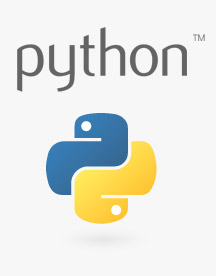Qwiic Atmospheric Sensor (BME280) Hookup Guide
Contributors:
 QCPete, santaimpersonator
QCPete, santaimpersonator
Resources and Going Further
For more product information, check out the resources below:
- Schematic (PDF)
- Eagle Files (ZIP)
- BME280 Datasheet
- Fritzing Part
- SparkFun BME280 Arduino Library
- SparkFun BME280 Python Library
- GitHub Hardware Repo
- Product Video
Need help getting started with Arduino and I2C? Check out these resources here:
- Arduino I2C Scanner Example
- Arduino Wire Library Reference Page
- Arduino Wire Library (In-Depth) Reference
Need help getting started with your Raspberry Pi? Check out these resources here:
- Setting up your Raspberry Pi
- Using your Raspberry Pi
- Documentation:
Need help getting started with Python and I2C? Check out these resources here:
- Python Programming Tutorial: Getting Started with the Raspberry Pi
- Raspberry Pi SPI and I2C Tutorial
Need some inspiration for your next project? Check out some of these other Qwiic product tutorials:
SparkFun 9DoF IMU (ICM-20948) Breakout Hookup Guide
How to use the SparkFun 9DoF ICM-20948 breakout board for your motion sensing projects. This breakout is ideal for wearable sensors and IoT applications.
Advanced Autonomous Kit for Sphero RVR Assembly Guide
Get your Advanced Autonomous Kit for the Sphero RVR built up with this hookup guide!
Qwiic SHIM for Raspberry Pi Hookup Guide
Ever wanted to prototype I2C components on a Pi? Now you can!
SparkFun Qwiic Thermocouple Hookup Guide
Learn how to hook up your Qwiic Thermocouple Amplifier.
Need some inspiration for your next project? Check out some of these other weather related tutorials:
ML8511 UV Sensor Hookup Guide
Get up and running quickly with this simple to use UV sensor.
SparkFun gator:particle Hookup Guide
The gator:particle is an I2C heart-rate monitor and pulse oximeter that can be used as a particle sensor. This tutorial will get you started using the gator:particle with the micro:bit platform.
LoRaSerial Hookup Guide
Simple serial over LoRa!
SparkFun Thing Plus - NINA-B306 Hookup Guide
A quick guide to get started using the SparkFun Thing Plus - NINA-B306. This Thing Plus is loaded with the Arm Cortex-M4 processor in the NINA-B306 along with on-board motion and environmental sensors in the ISM330DHCX 6DoF and BME280 pressure and temperature sensor.
